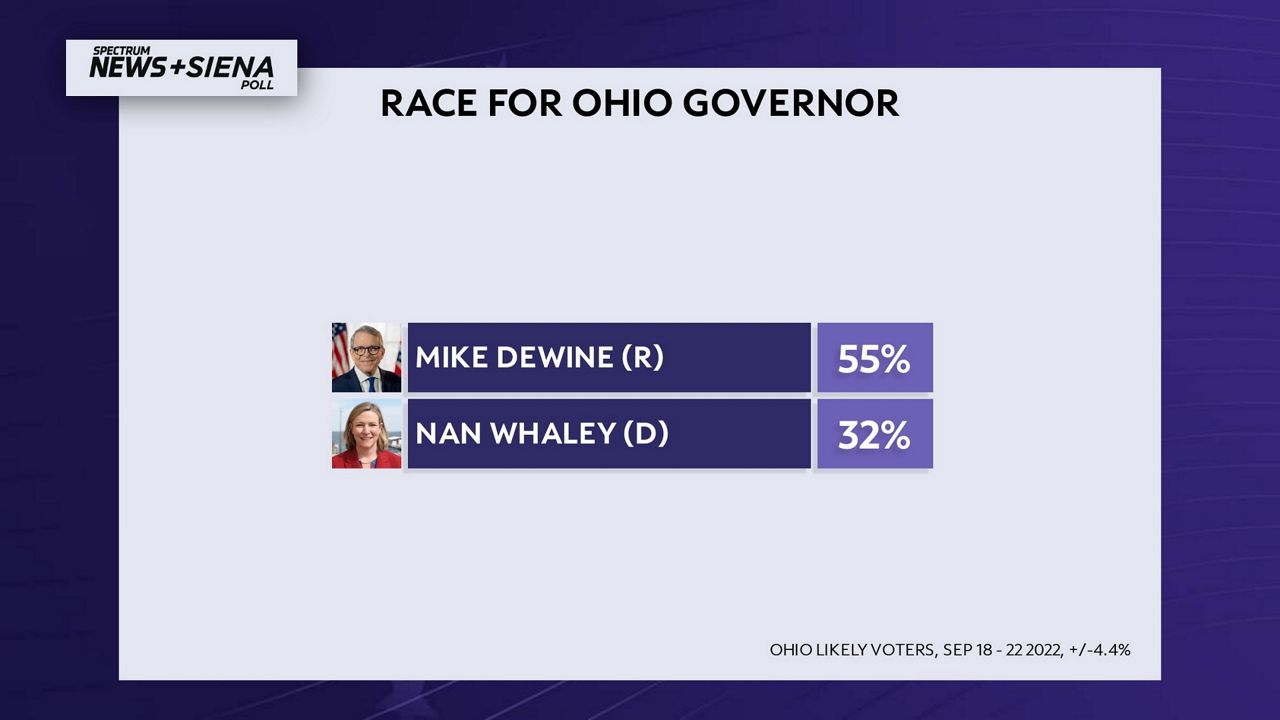COLUMBUS, Ohio — For years, universities and organizations have used responses to polls to predict how elections will pan out. But how did those poll results compare to election night wins?
In the Spectrum News/Siena College poll, the data shows participant’s responses were mostly similar to how people voted in the election. For example, the poll had been accurate on the outcome of the governor’s race, with Gov. Mike DeWine winning another term.
Another accurate prediction has been the race for supreme court chief justice, which Sharon Kennedy won.
The responses were however split in the middle about JD Vance and Tim Ryan for the Senate seat, but election results show Vance won by about 7 points.
“Pollsters are really doing everything they can to capture an accurate picture of what people’s opinions (are),” said Tom Sutton, Baldwin Wallace University professor. “Keeping in mind people’s opinions are snapshots in a poll, not a prediction.”
Baldwin Wallace University also has a survey called “The Ohio Pulse Poll 2.” They, too, had a poll asking participants who they would vote for in the mid-term election.

(Spectrum News/Siena College Poll)
More than 56% said they would have voted for DeWine. More than 40% said they would have voted for Kennedy. But 46% of participants say they would have voted for Vance while 50% said they would have voted for Ryan.
“We were within the margin of error for the prediction, but if you then take our prediction and compared it to what the outcome was, it was an 11-point gap,” he said.
Although sometimes these polls can be an indicator of how the election will pan out, Spectrum News Political analyst Brian Calfano said that’s not always the case.
“You may have a scenario where a poll nails it dead on,” said Calfano. “Said it was going to be a seven-point spread and actually said seven points and then it got the actual percentage points, too. But that’s not something that even the best polls are able to do election after election.”
Both Calfano and Sutton agree that the lack of poll participants plays into how accurate the results will be. And Sutton said one issue they’ve seen is less participation from Republicans.
“They made it very clear that unless a survey comes from someone they trust, and often what they’re talking about are polls that the Republican party or a candidate issues, which are not considered balanced polls, they won’t answer a survey,” said Sutton.
But Sutton said these polls aren’t just about predicting races. It’s much bigger than that.
“It’s a part of the democratic process which is to find out where people are in terms of their positions on issues, which is really the important part of polling and in some degree how does that get reflected in who people are showing preferences for,” said Sutton.




